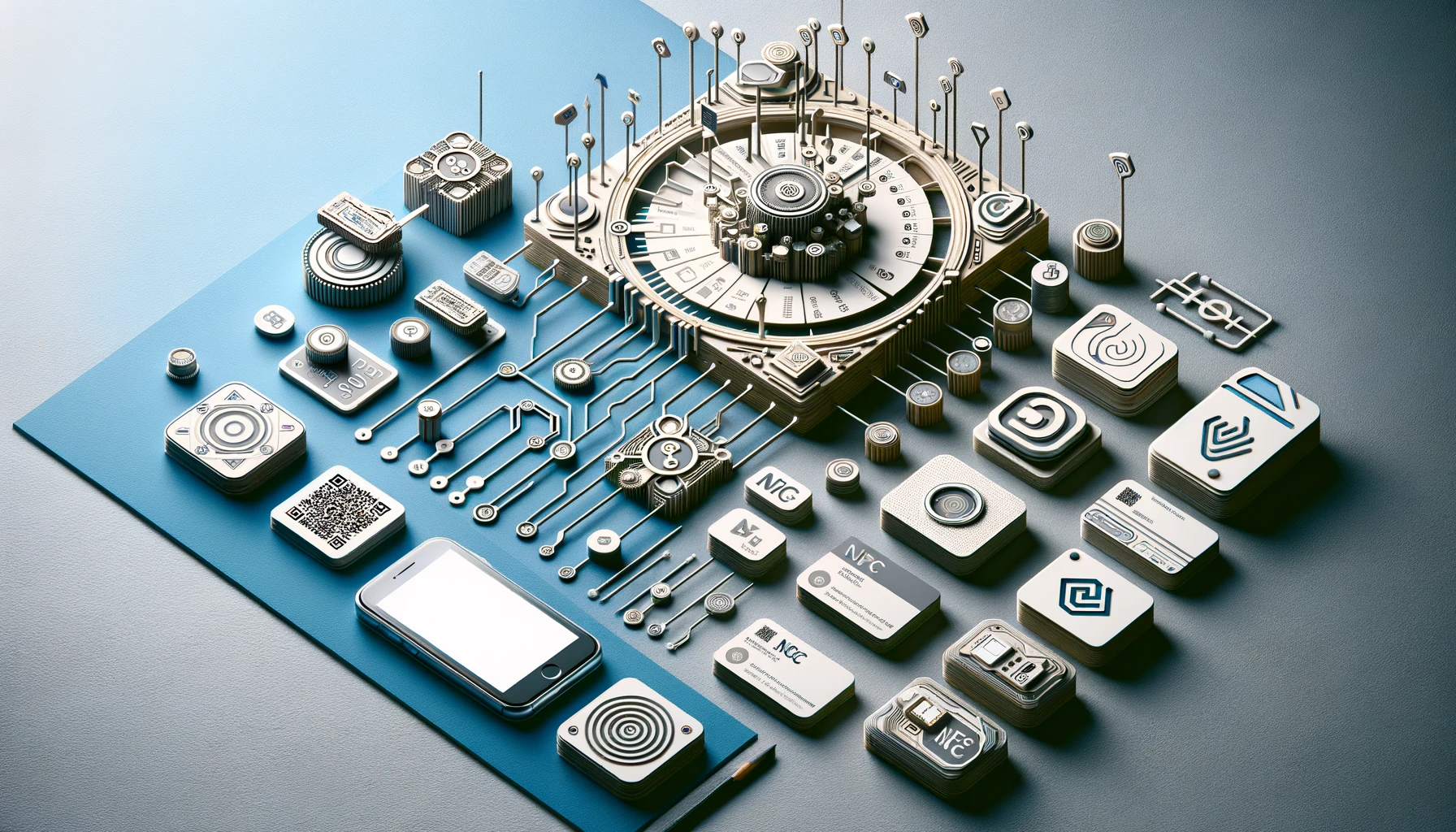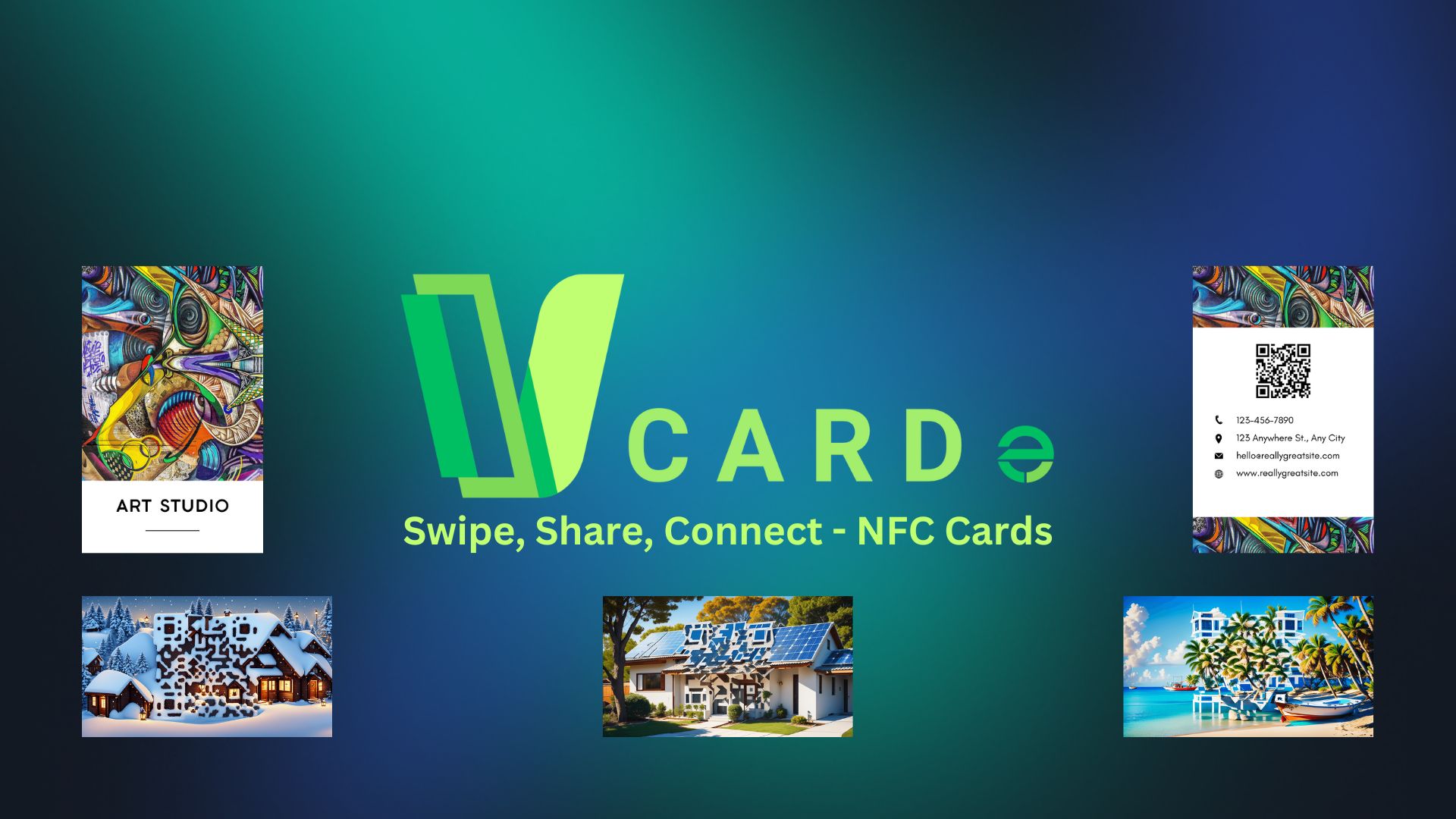Paper Cards vs NFC Cards: The Future of Networking
Introduction to Traditional and Modern Networking
Networking has long been an essential component of professional and personal growth. Whether it’s during business meetings, conferences, or social gatherings, the exchange of contact information is crucial for building relationships. Traditionally, paper business cards have been the go-to tool for sharing information, offering a simple and effective way to connect. However, in today’s increasingly digital age, NFC (Near Field Communication) cards are gaining popularity, offering a more modern and dynamic solution for networking.
This article delves into the key differences between paper business cards and NFC cards, highlighting their advantages and disadvantages. As we navigate the transition from traditional to digital networking, it’s crucial to understand how both options influence the future of professional interactions.
The Classic Paper Business Card: Tradition in Simplicity
Paper business cards have been the standard networking tool for decades. Their widespread use can be attributed to several factors that make them both convenient and accessible:
- Simplicity: Paper business cards are easy to use. They don’t require any technology or applications—just a simple hand-off of the card is all it takes to share contact details. This simplicity has made them a reliable networking tool for professionals of all ages.
- Affordability: Printing paper cards is relatively inexpensive, making them accessible to businesses of all sizes. For startups or professionals on a budget, this affordability is a major benefit.
- Personalization: Paper cards offer ample room for creativity. From unique designs, logos, and fonts to choosing different materials for printing, businesses can customize their cards to reflect their branding and personality.
Despite their advantages, traditional paper cards also come with limitations:
- Limited Information: Once printed, the information on paper business cards becomes static. If any detail, such as a job title or phone number, changes, the entire batch of cards becomes obsolete and must be reprinted.
- Physical Wear and Tear: Paper cards are vulnerable to physical damage. They can easily bend, tear, or get lost, reducing their longevity and professional appearance over time.
- Environmental Concerns: With growing awareness of environmental sustainability, paper cards contribute to significant waste. The use of paper, ink, and other materials for mass printing impacts the environment, particularly when cards are discarded after a single use.
NFC Cards: A Leap into Digital Networking
In contrast to traditional paper cards, NFC cards provide a digital and interactive networking solution that aligns with today’s tech-savvy business world. NFC (Near Field Communication) technology allows for wireless communication between two devices over a short distance. In the case of NFC business cards, a simple tap on an NFC-enabled smartphone or device instantly shares contact information or other digital content.
Here are some of the advantages that make NFC cards a superior alternative to paper cards:
- Real-Time Updates: Unlike paper cards, NFC cards allow users to update their information at any time. Whether it’s a change in job title, contact number, or website link, updates can be made in real time without reprinting the card. This flexibility ensures that your information is always accurate and up to date.
- Sustainability: NFC cards are far more sustainable than paper cards. Since they don’t need to be reprinted every time there’s a change in information, they significantly reduce paper waste. Businesses that prioritize sustainability can adopt NFC cards to minimize their environmental impact and contribute to eco-friendly practices.
- Enhanced Information Sharing: NFC cards are capable of sharing much more than just basic contact details. Users can embed links to websites, social media profiles, portfolios, or even video presentations. This transforms the business card from a simple contact tool to a dynamic and interactive experience.
- Durability: NFC cards are typically made from materials like plastic or metal, which makes them highly durable. They are resistant to bending, tearing, and other forms of physical damage that paper cards are prone to, making them a long-lasting networking tool.
While NFC cards bring many benefits, there are a few considerations to keep in mind:
- Device Dependency: To access the information on an NFC card, the recipient must have an NFC-enabled smartphone or device. While the majority of modern smartphones support NFC, some users may not have access to this technology, limiting the card’s usability for certain individuals.
- Higher Initial Cost: The initial cost of producing NFC cards is higher than that of paper cards. This is due to the advanced technology required for NFC functionality. However, the ability to update information without needing to reprint cards makes NFC cards more cost-effective over time.
Comparative Analysis: Durability and Sustainability
Durability: When it comes to durability, NFC cards are far more robust than paper cards. Paper cards are susceptible to wear and tear, and their physical condition can deteriorate quickly, especially when carried around frequently. In contrast, NFC cards, made from plastic or metal, can withstand the rigors of daily use without losing their professional appearance.
Sustainability: From an environmental perspective, NFC cards offer a much greener alternative. By eliminating the need for frequent reprints and reducing paper waste, NFC cards align with the growing trend of sustainable business practices. According to a study by Environmental Paper Network, the world consumes more than 300 million tons of paper each year, and paper business cards are a significant contributor to this. By transitioning to NFC cards, businesses can help reduce the environmental impact of their operations.
Usability and Accessibility
Paper business cards remain highly accessible since they don’t require any technology to be used. Anyone, regardless of age or tech literacy, can easily accept and store a paper card. This makes them a convenient tool for all demographics, including those who may not be comfortable with digital devices.
On the other hand, NFC cards rely on an NFC-enabled smartphone or device to access the information. While this may seem like a limitation, the rapid adoption of smartphones worldwide has made NFC cards increasingly practical. As more devices become NFC-enabled, the technology is expected to become a standard feature, making NFC cards just as accessible as paper ones. Furthermore, many NFC cards are also equipped with QR codes as a backup, allowing those without NFC devices to access the information via a simple scan. Learn more about creating NFC business cards here.
Cost Implications: Short-Term vs Long-Term
The upfront cost of NFC cards is higher than that of paper cards. This is because producing an NFC card involves more advanced technology and materials than printing a traditional paper card. However, in the long term, NFC cards offer greater cost efficiency. Since the information on an NFC card can be updated digitally, there is no need to reprint new cards whenever there is a change in contact details. This eliminates the recurring costs associated with reprinting, making NFC cards a more economical option over time.
In contrast, while paper business cards are cheaper to produce initially, the costs add up over time, particularly for businesses that undergo frequent changes in personnel, branding, or contact information. The need to frequently reprint paper cards can result in higher costs in the long run.
Future Outlook: The Evolution of Networking
As the business world continues to embrace digital transformation, NFC cards are poised to become the future of professional networking. The convenience, durability, and sustainability they offer make them an ideal solution for modern professionals looking to streamline their interactions and reduce their environmental impact.
Moreover, NFC technology opens up new possibilities for enhancing the networking experience. Imagine attending a business conference and, instead of handing out paper cards, exchanging NFC cards that not only share contact information but also link to interactive digital content such as videos, portfolios, or product demos. This kind of enriched experience is only possible with NFC-enabled cards.
As businesses become more eco-conscious and tech-savvy, the shift towards NFC cards is expected to accelerate. While paper business cards will continue to have a place in traditional networking for the foreseeable future, their dominance is gradually diminishing as NFC cards lead the way towards a more dynamic and technologically advanced future of networking.
Conclusion
In the debate between paper business cards and NFC cards, it’s clear that both options have their strengths and weaknesses. Paper cards are simple, affordable, and accessible, making them suitable for traditional networking. However, their limitations in terms of durability, sustainability, and flexibility cannot be ignored.
On the other hand, NFC cards represent the future of networking, offering real-time updates, enhanced durability, and environmental sustainability. As the world moves further into the digital age, NFC cards are paving the way for a more innovative and interactive approach to professional interactions. Businesses and professionals who seek to embrace cutting-edge solutions will find NFC cards to be a valuable asset in their networking toolkit.
Explore a wide range of NFC business cards and enhance your networking experience with the VCARDe Shop.






